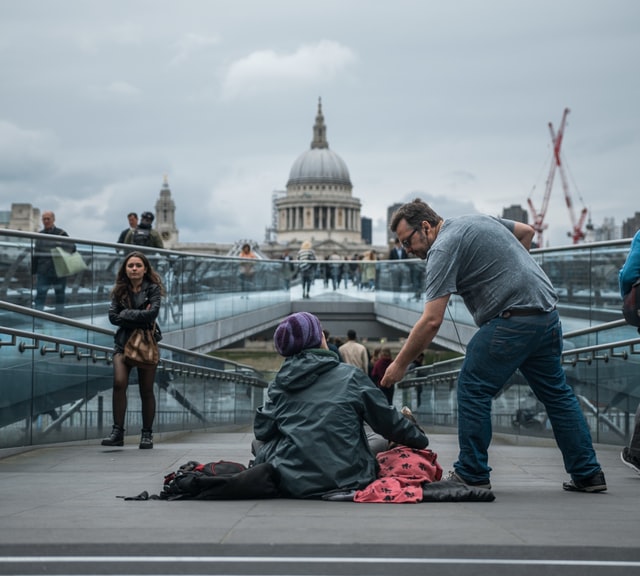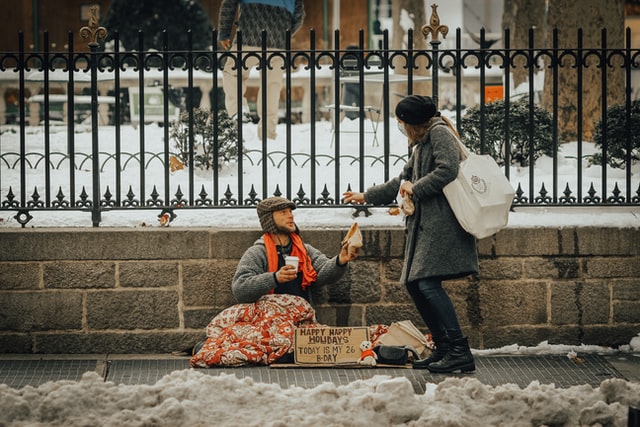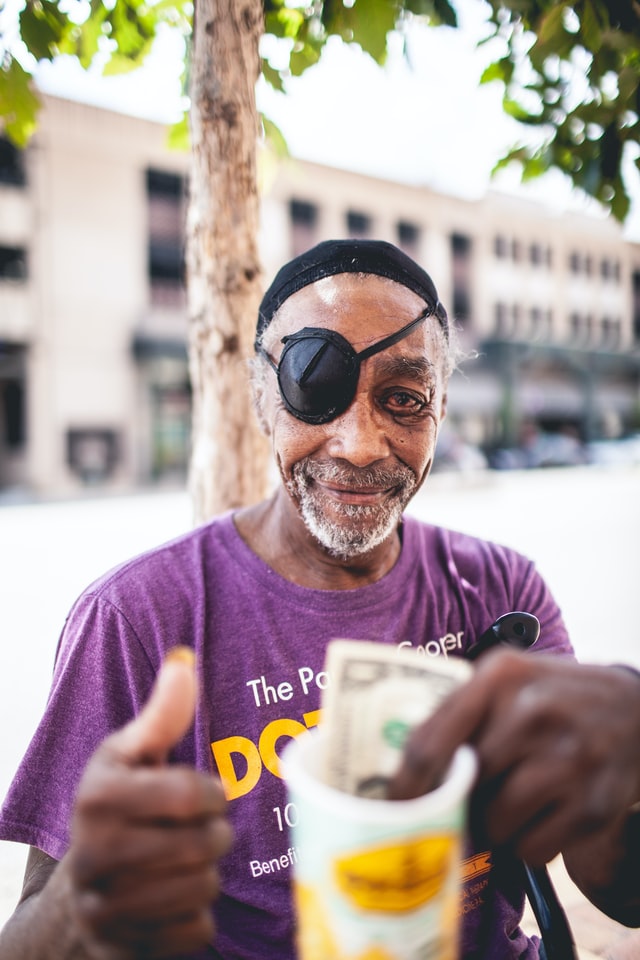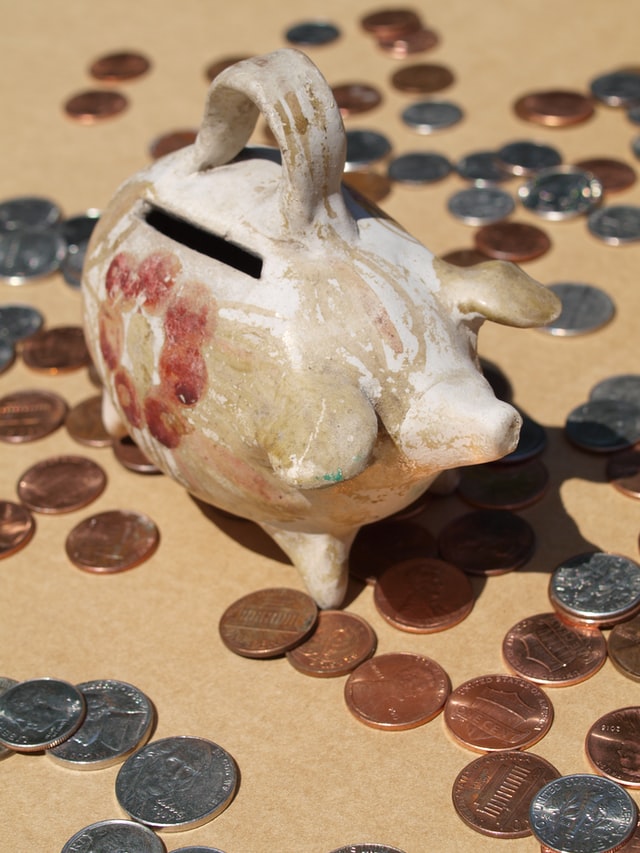
- Better Society -
- 7mins -
- 378 views
What happens when you give struggling people free money? You might be surprised!
Separate experiments in California and Canada have demonstrated that basic income recipients display intelligence and ambition, not lethargy — and simply giving money to homeless people might not be as bad an idea as some people might think.
Giving poor people cash seems to help — who knew?
A recent experiment has demonstrated that basic income recipients in a California city displayed intelligence and ambition, not lethargy. The randomised, controlled trial in the city of Stockton is being seen by sociologists as a good starting point for further research into the effects of a no-strings cash payment to alleviate the difficulties of living on a lower-income. Meanwhile, in Canada, a Vancouver-based charitable organisation found that simply giving a lump sum to homeless people produced surprisingly promising results when checked up on a year later.

participants received money on a debit card and were told to spend it on whatever they liked
The GoodNewsNetwork recently reported on a Californian project called SEED (Stockton Economic Empowerment Demonstration), which ended in February 2021, whereby $500 was distributed every month for two years to 125 random people living at or below the city’s median household income—around $48,000. The results of what happened in the first year, ending Feb. 2020, may come as a surprise to some.
The most compelling fact was that people who received the cash managed to secure full-time jobs at more than twice the rate of people in a control group who did not receive the income. Full time employment spiked from 28% to 40% for folks who received the added cash cushion. In contrast, the control group saw only a 5% increase in full-time employment over the first year—from 32% to just 37% one year later.
However, unlike unemployment benefits, participants were not told that their injection of cash would depend on their searching for a job. Instead they received their money on a debit card and were told to spend it on whatever they liked. Continued below…
Source: GoodNewsNetwork

it’s encouraging that a randomised placebo-controlled trial was able to find so many benefits
The vast majority of the spending was on things one might imagine it would go towards, such as food, utilities, rent, auto-maintenance, and so on. Another significant finding was that it allowed participants a little more time in the day to enjoy life, spend time with their families, or study to potentially improve their skillsets.
“The $500 spilled into their extended networks in material and immaterial ways that alleviated financial strain across fragile networks and generated more time for relationships,” the authors wrote.
One man had spent an entire year being eligible to receive a real estate license, but he never actually had time to begin the process. The $500 allowed him to take time off work to get his certificate and switch careers, resulting in a “360-degree” turnaround in his fortunes.
Lastly, despite the fact that every participant spent 100% of their monthly $500, 25% of the participants by trial’s end had managed to cover the $400 cost of an unexpected expense, suggesting that rather than going on spending sprees or committing the money immediately to rent, at least some were able to extend the life of the $500 and other sources of income much further, perhaps by saving more than normal—the most fundamentally important aspect of financial strength and growth.
GoodNewsNetwork‘s Andy Corbley suggests it’s an encouraging sign that a randomised placebo-controlled trial was able to find so many benefits.
A basic income may be a more flexible and effective alternative than other existing welfare programs that limit the scope of the handout to particular requirements and circumstances, because it allows the individual to maintain their own agency and manage their own affairs. Learn more about SEED.
Source: GoodNewsNetwork

Canadian Researchers Gave Homeless People $7,500 Each with amazing Results
In a bold move aimed at challenging the stereotypes of homeless people in Canada, a research project from a Vancouver-based charitable organisation found that simply giving money to homeless people turned out to be not as bad an idea as some people might presume.
The New Leaf project took 115 homeless people who were confirmed not to have serious mental or substance abuse problems, and put $7,500 in the pockets of 50 of them to see if they could turn their life around. The results were heartening.
One entire year later, most recipients still had $1,000 in savings and 67% were could still feed themselves every day.
The average age was 42, with 1-in-3 participants reporting they had a child. On average, they had been homeless for six months, with 1-in-4 employed somewhere.
The study took monthly and quarterly self-reported surveys on conditions and expenditures, and while many may argue that the money would be spent irresponsibly, for example on drugs or alcohol, the results of the study provide a refreshing perspective on the mindset of those living on the fringes of Canadian society.
Source: GoodNewsNetwork

Individual money management skills were put to the test
After a year of spending on what they judged to be important, average spending on alcohol or drugs went down by 39%, perhaps because the individuals recognised they had a real shot of turning their fortunes around.
An impact report done by the Foundation for Charitable Giving found that recipients moved into housing two months faster than those who didn’t receive the $7,500 allowance.
While two months might not seem like that much, try spending it on the street and it most certainly will. Additionally, the two-month difference also allowed emergency services previously utilised to be freed up for others.
The spending habits of the recipients in the study were, as you might imagine, more frugal than the control group of non-cash participants. However, the spending was spread out over a year, with 52% of it going to food and rent, 15% going to medication and transportation, and an average of $700 on one-time cash purchases such as a bike or computer.
The final topic of analysis is that in a roundabout way, handing $7,500 to homeless people actually saved the province of British Columbia an average of $600 per person, compared to spending for a year of their emergency services.
“By spending fewer nights in shelters, the cash group saved the shelter system approximately $8,100 per person for a total of roughly $405,000 over one year,” reads the impact report. “Factoring in the cost of the cash transfer, that’s a savings of $600 per person for society.”
“Cash transfers provide choice, control and purchasing power at a critical time in people’s lives,” reads a policy suggestion based on New Leaf Project’s data. “This is not merely a gesture of help. It is a signal that society believes in them.”
“By preventing people from becoming entrenched as homeless, NLP transforms lives while saving community resources that could be better spent elsewhere.”
One of the New Leaf Project recipients mentioned that the money gave them the hope and foundation they needed to have the courage to try and turn their life around, and another, speaking with CBC news, explained he was able to take a course in computers that put him on his dream career path of being a community counselor for those with substance addictions.
Source: GoodNewsNetwork


